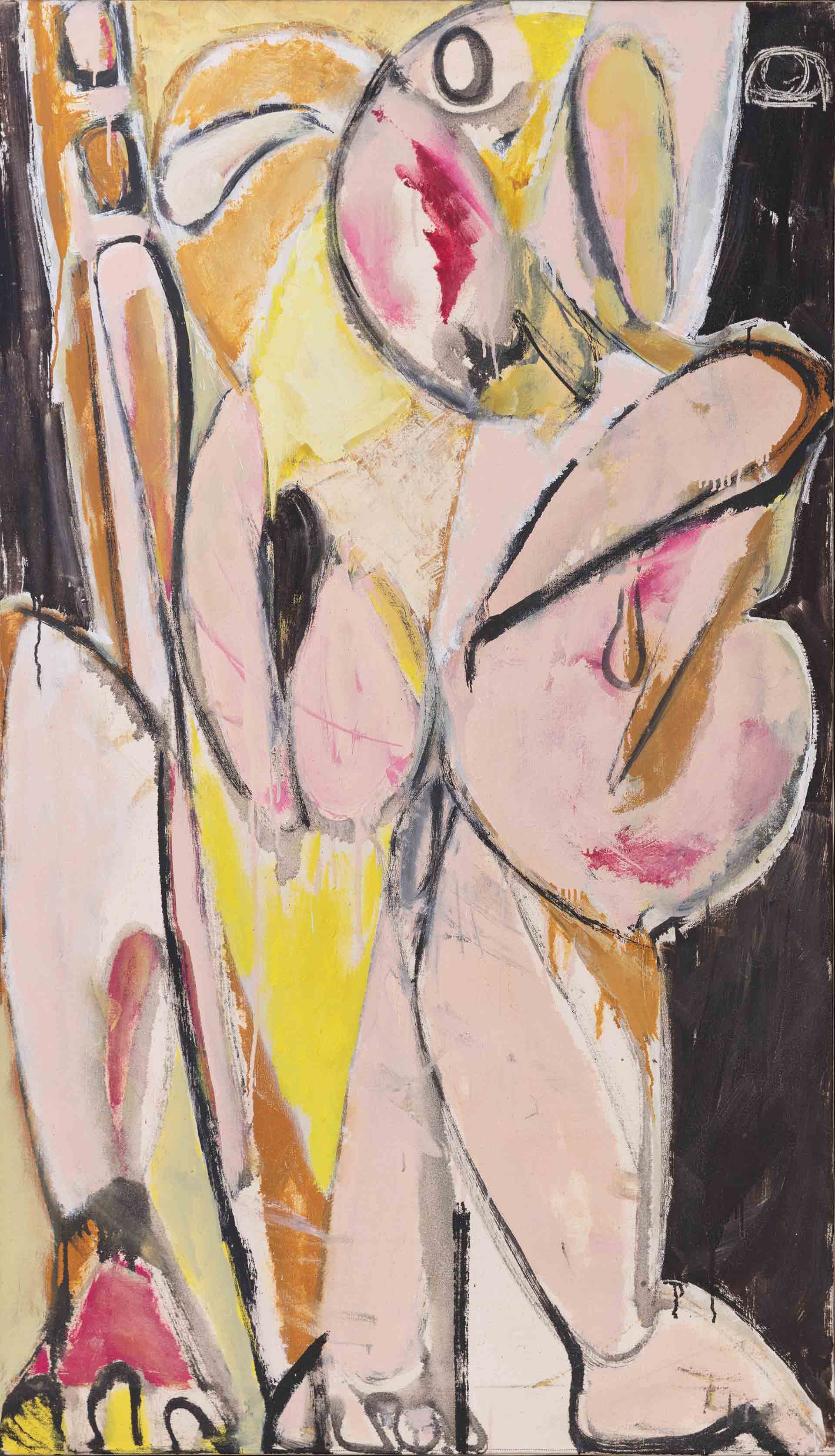Prophecy
In the summer of 1956, Krasner painted a work unlike any other she had made. The canvas is dominated by looping, fleshy forms, lined with black and with accents of pink that emphasize the bodily imagery. Prophecy was painted at a time when her relationship with Pollock was coming under considerable strain. She described how the painting “disturbed me enormously” and it remained on her easel when she left for France alone. On August 12, she received a telephone call with the news that Pollock had crashed his car, killing himself and Edith Metzger, a friend of his lover Ruth Kligman, who had survived.
Just weeks after the funeral, Krasner returned to her painting, making three works that continued the series she had begun with Prophecy: Birth, Embrace, and Three in Two. Two of three of these works reunited here seem to present seething landscapes animated by dark psychological forces. When asked about her determination to work, even in the face of such profound grief, Krasner was matter-of-fact: “Painting is not separate from life. It is one. It is like asking: do I want to live? My answer is yes—and I paint.”

